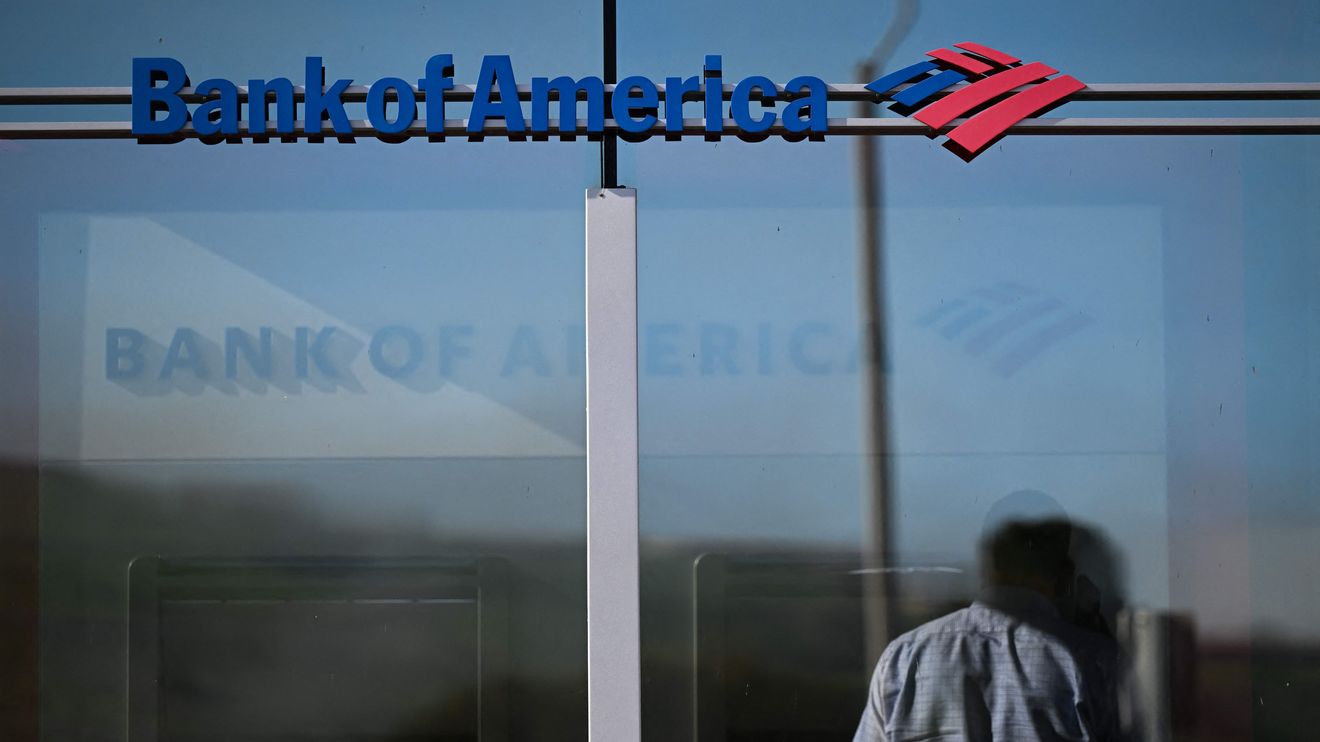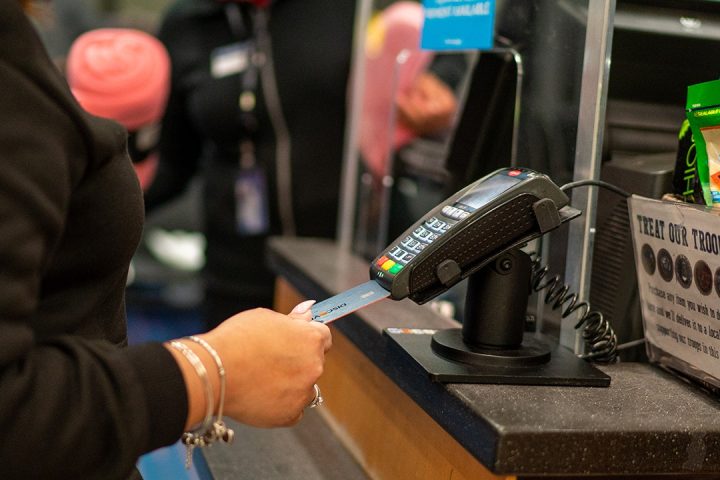Juan Sanchez, a 45-year-old who just welcomed a new daughter, feels lucky to have paid parental leave through his job at a Wells Fargo call center in Lubbock, Texas. But with two other daughters and a nephew to care for, his $22.70-an-hour paycheck isn’t enough to cover his family’s expenses. He works two side gigs to fill in the financial gaps. Sanchez says he and his coworkers deserve more, and he’s been actively involved in trying to unionize the bank’s call-center employees for the past four years.
Sanchez is hoping that Bank of America’s recent move to increase its minimum pay to $23 an hour is a good sign for workers like him at rival banks. Wells Fargo
WFC,
has previously raised its minimum pay after competitors did so, including increasing minimum hourly pay from $18 to $22 in 2021.
“They are trying to be competitive, but even those raises are just not livable,” Sanchez said.
Bank of America’s
BAC,
pay increase comes at a crucial time for both banks and their workers. Banks are struggling to hire and retain younger workers. Turnover is high for lower-paid roles. And like companies in many other sectors, banks have also started to feel more pressure from workers who are organizing.
The Communications Workers of America union successfully organized employees at a small California bank in 2022, and is now organizing Wells Fargo bank workers. Employees like Sanchez are pushing for higher wages and want more leverage to address on-the-job stress.
Why Bank of America and other big banks are raising wages
When the Bank of America pay increase goes into effect in October, the bank’s minimum hourly wage will be the highest among the country’s largest banks.
“Providing a competitive minimum rate of pay is foundational to being a great place to work,” Sheri Bronstein, the chief human-resources officer at Bank of America, said in a statement.
But aside from their goal of building a better workplace, banks have a hiring problem, labor experts said. Nearly 65% of 388 financial-services organizations reported at least some difficulties with hiring and retaining employees this year, according to a recent survey of compensation in the banking sector by the global consulting and technology firm Crowe. Many of the surveyed banks also reported challenges in “developing managers, leaders and employees.”
Turnover rates are high for lower-paying bank jobs, the Crowe survey found. For non-officer roles — meaning jobs such as tellers and personal bankers — the turnover rate is 19.8% this year, down from 23.4% a year ago. Officer-level turnover increased for the second year in a row — from 3% in 2021 to more than 6% in 2023. The top two reasons workers left were a lack of career development and advancement and inadequate total compensation, the survey found.
Employees who earn hourly wages have many job options outside of financial companies that might have “less responsibility and more flexibility,” the Crowe report said. That could be one factor behind banks raising base pay for those positions, the report added.
Banks face stiff competition from other industries when it comes to recruiting a new crop of workers, said Julia Pollak, the chief economist at the online job-search platform ZipRecruiter. Older workers are retiring, but younger workers don’t find bank work attractive compared to other options. Lower-paid bank work tends to be repetitive, she added, and when wages for other entry-level or low-paid jobs rose during the pandemic, the pay gap narrowed between a bank job and, for example, a job in leisure, retail and hospitality.
While most teller and bank jobs are still done in person, many industries that look for the same skill sets offer higher pay and more remote-work opportunities, Pollak added. “Anyone with any kind of quantitative and financial skills has more options now,” she said. There are many jobs, such as roles in fintech companies, that are “sexier” and “more exciting” to young people, and often those are also remote, she continued.
The challenge for banks is to “remake themselves and rebrand themselves” so that they can appeal to the younger generation, Pollak said.
‘There’s this assumption among most people that this is a middle-class, middle-wage job’
Banks’ lowest-paid employees typically include tellers and personal bankers at branches, office support staff and call-center employees.
It may be counterintuitive to the public’s general impression of those jobs, but many frontline bank workers’ pay is quite low, and they often don’t have opportunities for career growth that would lead to significant pay jumps, said Anastasia Christman, a senior policy analyst at the National Employment Law Project, a labor advocacy group funded by various labor unions.
“Because they work indoors in a nice setting with nice furniture, and they tend to be dressed professionally … there’s this assumption among most people that this is a middle-class, middle-wage job that allows people to advance and really create a life for themselves,” Christman told MarketWatch. “That is not always the case. The wages can be very low.”
Nationally, the median wage for bank tellers in 2022 was $17.49 an hour, or $36,380 a year, according to the Bureau of Labor Statistics.
Here is the minimum wage at the 10 biggest U.S. banks by assets, according to representatives of each bank. Some banks have a range of wages for their lowest-paid positions that depends on the role’s geographic location.
Goldman Sachs, one of the 10 largest U.S. banks, declined to comment on its minimum-wage level. The investment bank and financial-services company differs from other large commercial banks in that its consumer-facing division — including its online-only bank, Marcus — made up only around 3% of the company’s total net revenue in 2022. The average salary range for a customer-service representative at Goldman Sachs ranges from about $42,891 a year (about $21.45 an hour) to $53,448 a year, according to Indeed.
Some bank workers want more than a bigger paycheck — they want less-stressful jobs
Raising the minimum wage for bank workers is a good first step, but banks also need to address the issue of employee stress among their lower-paid workers, Christman said.
The stress level contributes to the high turnover rate among lower-paid workers, she added. That’s due in part to the fact that workers sometimes spend much of their day talking to people in dire financial situations, and discussing “more private, more sensitive” areas of customers’ lives, Christman said.
Sanchez, meanwhile, said he and his co-workers feel stressed by how Wells Fargo tracks employee performance. He said his performance evaluation was negatively affected when he took a lunch break 20 minutes late, even when the tardiness was because of something outside his control, like talking to a customer on a call.
He also noted that higher minimum pay rates don’t always lead to higher take-home pay for workers. Shortly after Wells Fargo raised its minimum wage to $20 from $18 in 2021, Sanchez said, the bank ended quarterly bonuses.
“The raise I got was less than what I was bringing in on my quarterly bonuses,” Sanchez told MarketWatch. “So I actually lost money by [Wells Fargo] raising rates.”
Wells Fargo did not respond to MarketWatch’s inquiry about the company ending bonuses and how employees’ performance is evaluated.
In addition to pay raises, Sanchez and other Wells Fargo employees seeking to unionize with the Communications Workers of America say they want “attainable” performance metrics and enough staffing to help reduce employee stress levels and workload, according to a statement by Wells Fargo Workers United.
Very few bank workers are unionized: Only about 1.3% of employees working in the finance industry were represented by a union in 2022, according to the Bureau of Labor Statistics, compared to 10.1% of all workers nationwide. None of the big banks’ workers are unionized.
“‘I have a finance degree and work at Wells Fargo, [but] it’s sad that I could go flip burgers and make just about the same amount.’”
The CWA has accused Wells Fargo managers of interfering with its unionization efforts and filed unfair-labor-practice charges with the National Labor Relations Board. A Wells Fargo spokeswoman said the company respects employees’ rights under the National Labor Relations Act, and that its policies do not prohibit employees from discussing wages, benefits and terms of employment, or otherwise engaging in collective activity.
“When our employees have concerns, we want to hear directly from them to understand their perspectives and determine how we can work together to improve our workplace,” the spokesperson said in a statement sent to MarketWatch.
Sanchez said he has considered taking jobs at other companies for higher pay, but those roles could increase health-insurance costs for his daughters, and may not include paid parental leave. That’s why he wanted to be part of the unionizing efforts at Wells Fargo.
“I take less money to be around my daughters,” Sanchez said. “But I don’t want the next group of workers to have to make that choice. I have a finance degree and work at Wells Fargo, [but] it’s sad that I could go flip burgers and make just about the same amount.”
Read the full article here






